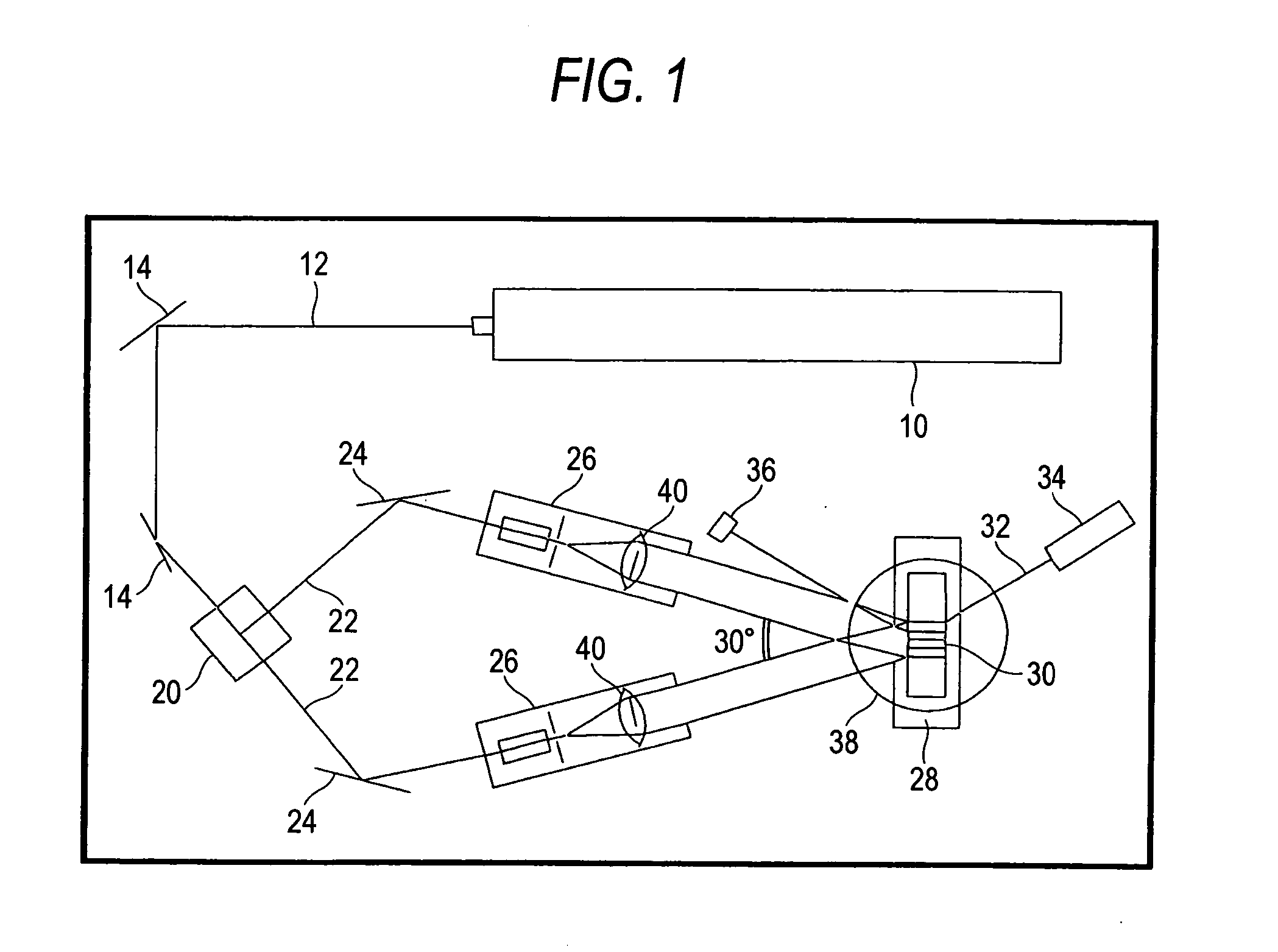Hologram recording material, hologram recording method and optical recording medium
a technology of optical recording medium and recording material, which is applied in the direction of photosensitive materials, instruments, photomechanical equipment, etc., can solve the problems of hard discs, unreplaceable, and difficult to replace, and achieve high sensitivity, high diffraction efficiency, and good storage properties
- Summary
- Abstract
- Description
- Claims
- Application Information
AI Technical Summary
Benefits of technology
Problems solved by technology
Method used
Image
Examples
example 1
[Hologram Recording Method by Polymerization Process]
[0268] The sensitizing dye DEAW described in JP-A-6-43634 exhibits a molar absorptivity of 5,550 (methylene chloride) at 532 nm. The metal complex dyes S-1, S-26 and S-49 of the invention exhibits a molar absorptivity of 13 (methylene chloride), 1,120 (acetone) and 660 (acetone) at 532 nm, respectively.
[0269] As mentioned in Example 1 of JP-A-6-43634, the radical polymerization initiator 1-2, the chain transfer agent MBO, POEA as a monomer and cellulose acetate butyrate CAB531-1 as a binder were prepared in an amount of 1.20%, 1.80%, 46.5% and 50.5%, respectively. The molarity of the sensitizing dye was calculated such that the transmittance of the hologram recording material having a thickness of 200 μm at a hologram recording wavelength of 532 nm is 80%. The molarity thus calculated was then multiplied by the molecular weight of the sensitizing dye. DEAW, S-1, S-26 and S-49 were then prepared in an amount of 0.037%, 7.4%, 0.39...
example 2
[Hologram Recording Method by Color Development Process]
[0274] The acid generator I-5 (50% based on the weight of binder), the dye precursor L-2 (10% based on the weight of binder), and the binder PMMA-EA (poly(methyl methacrylate-5% ethyl acrylate) copolymer; Mw: 101,000) were prepared. As sensitizing dyes there were prepared DEAW, S-1, S-26 and S-49 in an amount of 0.037%, 7.4%, 0.39% and 0.71% of the solid content determined above, respectively. These materials were then dissolved in a two- to four-fold weight of methylene chloride (optionally with acetone or acetonitrile) under a red lamp to prepare a comparative hologram recording material composition 2 and inventive hologram recording material compositions 201 to 203, respectively.
[0275] The comparative hologram recording material composition 2 and the inventive hologram recording material compositions 201 to 203 were each spread (optionally in a multi-layer form) over a glass substrate under a red lamp to a thickness of abo...
example 3
[Hologram Recording Method by Discoloration Process (Sensitizing Dye+Discolorable Dye)]
[0284] The acid generator I-5 (50% based on the weight of binder), the discolorable dye G-16 (8% based on the weight of binder), and the binder PMMA-EA (poly(methyl methacrylate-5% ethyl acrylate) copolymer; Mw: 101,000) were prepared. As sensitizing dyes there were prepared DEAW, S-1, S-26 and S-49 in an amount of 0.037%, 7.4%, 0.39% and 0.71% of the solid content determined above, respectively. These materials were then dissolved in a two- to four-fold weight of methylene chloride (optionally with acetone or acetonitrile) under a red lamp to prepare a comparative hologram recording material composition 3 and inventive hologram recording material compositions 301 to 303, respectively.
[0285] The comparative hologram recording material composition 3 and the inventive hologram recording material compositions 301 to 303 were each spread (optionally in a multi-layer form) over a glass substrate unde...
PUM
 Login to View More
Login to View More Abstract
Description
Claims
Application Information
 Login to View More
Login to View More - R&D
- Intellectual Property
- Life Sciences
- Materials
- Tech Scout
- Unparalleled Data Quality
- Higher Quality Content
- 60% Fewer Hallucinations
Browse by: Latest US Patents, China's latest patents, Technical Efficacy Thesaurus, Application Domain, Technology Topic, Popular Technical Reports.
© 2025 PatSnap. All rights reserved.Legal|Privacy policy|Modern Slavery Act Transparency Statement|Sitemap|About US| Contact US: help@patsnap.com



